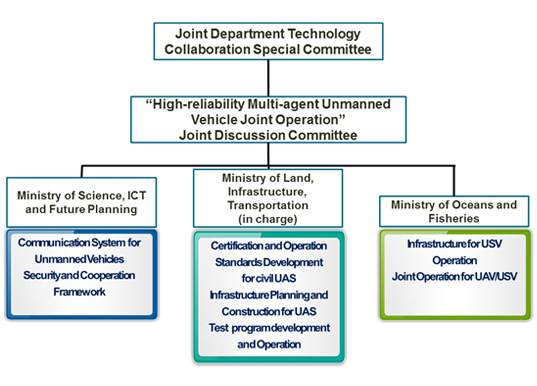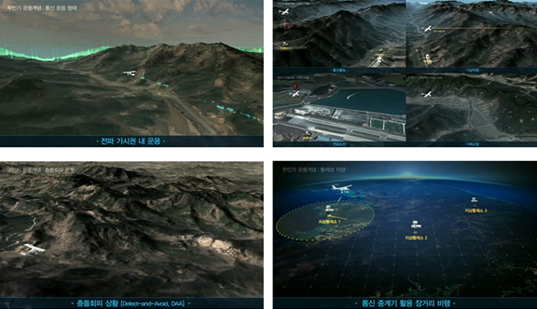KAIST
BREAKTHROUGHS
Research Webzine of the KAIST College of Engineering since 2014
Spring 2025 Vol. 24From theory to policy: Nationwide deployment project for civil unmanned aerial vehicles
From theory to policy: Nationwide deployment project for civil unmanned aerial vehicles
Worldwide deployment of civil Unmanned Aerial Vehicles is imminent, and Korea is not an exception. Prof. Hyunchul Shim at the Department of Aerospace Engineering at KAIST has spearheaded a nation-scale effort to prepare for the upcoming UAV era by setting up the vital infrastructure, both tangible and intangible.
Article | Fall 2016
Unmanned Aerial Vehicles (UAVs), more commonly known as drones, are widely used for military applications, such as surveillance and aerial transport. Since the late 1990s, people have observed the benefits of using UAVs for civil application as well. First, military drones were converted for civil applications such as border patrol and wide-area surveillance. The results were quite satisfactory, and people began to consider the possibility of using drones on a larger scale and with greater ease. Even now, UAVs are being introduced into the airspace on a case-by-case basis. So aviation authorities had to think about what has to be done for flying drones alongside passenger jets.
Civil airspace is a very complex structure consisting of classes, right-of-ways, and invisible roads called airways. All airplanes flying there must obey the rules mandated by a single agency called the International Civil Aviation and Organization (ICAO). They set the rules and guidelines that must be obeyed by all the countries in the world. The complication is that existing airspace is already filled up with manned aircraft. Since the top priority of aviation is safety, the ICAO has started to provide the rules for UAVs since 2014.
In November 2011, Prof. Shim, along with six other professors at the Department of Aerospace Engineering at KAIST, proposed a pilot project on how to introduce UAVs into the Korean civil airspace. This was a pioneering effort. Coincidently, in Feb 2012, U.S. President Barack Obama announced a plan to legalize UAVs and other countries followed suit. This small project that lasted for eight months led to another larger project (6 billion KRW) of preliminary study for UAV deployment.
In 2013, Prof. Shim, along with Profs. Jinwhan Kim and Hanlim Choi, also started looking into the possibilities of integrating different types of unmanned vehicles for futuristic applications. Prof. Shim proposed a joint-ministry project for such an effort, which came into fruition in 2014 by winning a 30 billion KRW government project for nationwide deployment of civil UAVs and unmanned ships.
For the successful operation of this project, KAIST will host a research center that collaborates with multiple universities and government-subsidized research institutes such as KOTI (Korea Transport Institute) and ETRI (Electronics and Telecommunications Research Institute). Five KAIST professors from Aerospace Engineer, Electrical Engineering, and Civil Engineering are playing key roles in this project. The project is set to run for six years, including the real operation of unmanned aerial vehicles based on two-seater light sport aircraft. This effort will pave the way for UAVs to fly safely and efficiently in the Korean sky with KAIST’s leadership in this emerging and exciting area of unmanned aviation.
 For more detail, please listen to the inverview with Prof. Shim.
For more detail, please listen to the inverview with Prof. Shim.
Most Popular

When and why do graph neural networks become powerful?
Read more
Smart Warnings: LLM-enabled personalized driver assistance
Read more
Extending the lifespan of next-generation lithium metal batteries with water
Read more
Professor Ki-Uk Kyung’s research team develops soft shape-morphing actuator capable of rapid 3D transformations
Read more
Oxynizer: Non-electric oxygen generator for developing countries
Read more


